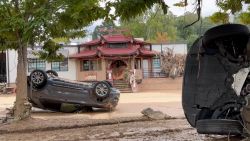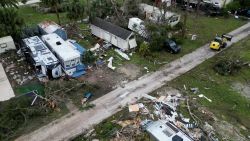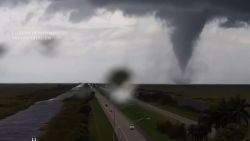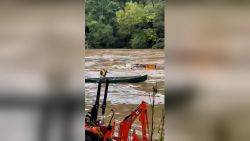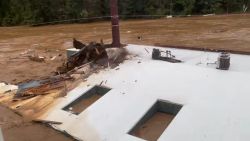Editor’s Note 10/23/24: Since this story was first published, officials in Buncombe County, North Carolina, home to Asheville, have reported they overcounted the death toll in their region by as many as 30. Some of the death toll figures in this story are no longer accurate.
On the last Thursday of September, as Hurricane Helene was setting out on a path of destruction from Florida to the southern Appalachians, Kim and Rod Ashby stopped at the home they were building in Elk Park, North Carolina.
A light rain was falling but the Ashbys “felt safe there,” with pillars raising their second home about 20 feet above the ground near the Tennessee state line, Kim Ashby’s daughter, Jessica Meidinger, recalled.
For days before Helene made landfall in Florida, the National Weather Service in North Carolina warned of an historic combination of heavy rain, life-threatening flooding and catastrophic landslides along the mountains. A system that moved into the area before Helene had already left the ground and rivers saturated.
More than 10 hours before the hurricane would make landfall hundreds of miles away, the Greenville-Spartanburg, South Carolina, weather forecast office predicted: “This will be one of the most significant weather events to happen in the western portions of the area in the modern era.”
On the morning of September 27, the Ashbys were having breakfast when their home was swept away by the flood-prone Elk River. A neighbor snapped a picture as it floated away. Rod Ashby immediately grabbed his wife and their three dogs. They clung to an old mattress at first. Then, to a section of wall that eventually broke apart, separating them in the fast-moving, debris-strewn waters, according to Meidinger.

“That’s the last time that he saw my mom. The last time anyone has seen my mom,” Meidinger said of her stepfather. He survived, telling family he reached for a tree branch to pull himself from the water and then ran up and down the riverbank calling out for his wife.
More than a week after Helene leveled vast swaths of western North Carolina, Kim Ashby is among the hundreds of people still unaccounted for.
“He wants to find Kim,” said Lauren Meidinger, Rod Ashby’s daughter-in-law.
More than 100 deaths have been recorded in the state. Overall, Helene has killed at least 231 people across six states, one of the deadliest hurricanes to strike the US mainland in the last 50 years. More than 300,000 people remained without power in Georgia and the Carolinas Sunday evening, with more than 140,000 customers impacted in North Carolina alone, according to poweroutage.us.
Meanwhile, President Joe Biden has directed an additional 500 troops to western North Carolina to assist with ongoing recovery efforts as the hard-hit region continues to struggle in Helene’s wake.
The deployment comes after Biden directed 1,000 troops to help with response and recovery efforts last week. There are also over 6,100 National Guard and more than 7,000 federal personnel on the ground helping with recovery efforts, according to the White House.
‘The smell of the loss of life’

Hurricane Helene made landfall September 26 on Florida’s Big Bend as a Category 4 and created a 500-mile path of destruction with catastrophic flooding, damaging winds and power outages.
A week after the storm, the smell of death overpowers the cool mountain air over the isolated, twisting roads of devastated rural western North Carolina.
“You’re driving past cities and you can smell the dead bodies,” said Jazmine Rodgers, 32, a consultant for nonprofits who has been volunteering to help neighbors in the hard-hit city of Asheville.
Asheville is in Buncombe County, which has reported at least 72 deaths, the most in the state. The county medical examiner has had to stop updating the death toll, awaiting a support team from the state to arrive to help, according to Buncombe County spokesperson Lillian Govus. Hundreds of county residents are either missing or stranded in the wake of the hurricane, Govus said Saturday.
“I remember during Hurricane Katrina how people would talk about the smells,” Rodgers told CNN, her voice breaking down. “You know, the smell of decay, and the smell of the loss of life. That will probably stick with me the rest of my life.”
Asheville sits at the foothills of the Blue Ridge Mountains, which meant the city turned into a “catch basin” for rain gushing down 4,000 feet of elevation, Asheville Fire Chief Michael Cayse told CNN. The city of 95,000 people lies at the intersection of two major rivers, the French Broad and the Swannanoa, which leave it vulnerable to flooding.
Large sections of western North Carolina, hundreds of miles from the coast, have become unrecognizable. The emergency response has been hampered by hundreds of decimated roads and downed bridges and complicated by lingering communication outages.
“My hometown basically doesn’t exist anymore. I grew up in western North Carolina outside of Lake Lure, spent every summer in Chimney Rock. It’s completely gone,” Rodgers said.
“I was in denial for a couple of days when I was driving around. I was convinced that a tornado came through. I could not wrap my brain around the fact that our river swelled so big that it took out everything. It’s just the power of water.”
A community is wiped out
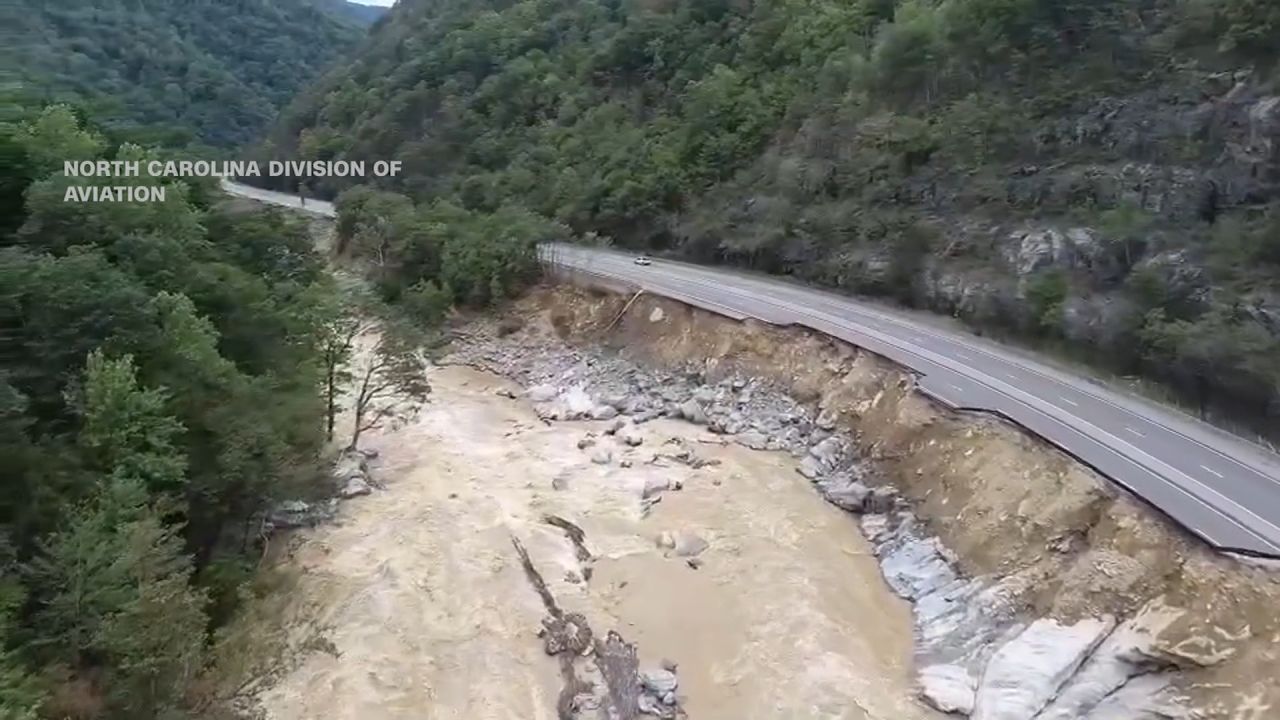
In Chimney Rock, a village about 20 miles southeast of Asheville, no building or home was left unscathed by the raging floodwaters. With a population of fewer than 200 people, the once-idyllic mountain enclave is named for the towering granite outcropping that overlooks it.
“Everything you take for granted has been washed away, literally,” Mayor Peter O’Leary told CNN affiliate WSOC-TV.
“Every single business, every single building has been destroyed or severely damaged,” O’Leary said.
Rodgers and others said locals were using pack mules to help rescue people as well as to deliver food, water and other essentials to residents in areas where roads remain unpassable. Some of the stranded scrawled their names on tarps in hopes that images posted to social media would be seen by anxious relatives. A number of communities are only reachable by helicopter.
“Now Asheville is getting so much attention even though there are smaller communities outside of Asheville that also need attention,” Rodgers said.
In nearby Black Mountain, North Carolina, where about 450 people have been rescued, authorities have moved from search and rescue operations to recovery efforts, Black Mountain fire chief John Coffey said at a Buncombe County news conference Sunday.
Crews are conducting targeted searches in areas where homes were destroyed, according to Ryan Cole, Buncombe County’s assistant emergency services director.
“We’re having to go through debris piles and utilizing specialty equipment,” Cole said at Sunday’s news conference.
“That’s going to take a lot longer, because it’s a systematic approach to go through that,” he said. “You’re pulling it up a piece at a time.”
The amount of people still missing remains unclear. FEMA was working with state and local officials to confirm the total, Administrator Deanne Criswell told CNN.
“When you talk about the actual landscape of western North Carolina, there’s like small towns, there’s larger towns, but if you live on the side of a mountain you might like have one way in and one way out,” Rodgers said. “And if a bunch of large trees blow over on your main street, people are trapped.
“We’re talking about entire mountainsides completely gone. We can’t really account for how many people are missing because there’s little hollers (or valleys) all over western North Carolina, little pockets of communities, little trailer parks. And if you don’t have family in those areas, you probably never heard of them.”
In the resort town of Maggie Valley, North Carolina, about 35 miles west of Asheville, Joseph Franklin McElroy said Wednesday his 6-year-old twins were coping with the disaster by treating it as a “grand adventure” but were still unaware their favorite teacher – “like a second mom” – had drowned during the storm.
“I mean, they really love this teacher,” he told CNN. “Now we face having to tell them that this grand adventure killed their beloved teacher.”
McElroy lamented what he called the poor communication between local authorities and residents.
“You know, when the internet goes out, we got nothing,” he said. “There’s a lot of people still missing their loved ones, not knowing whether they’ve been rescued. There is a sort of a psychological trauma that’s going on here where people don’t know and it’s real.”
‘We need to evacuate’
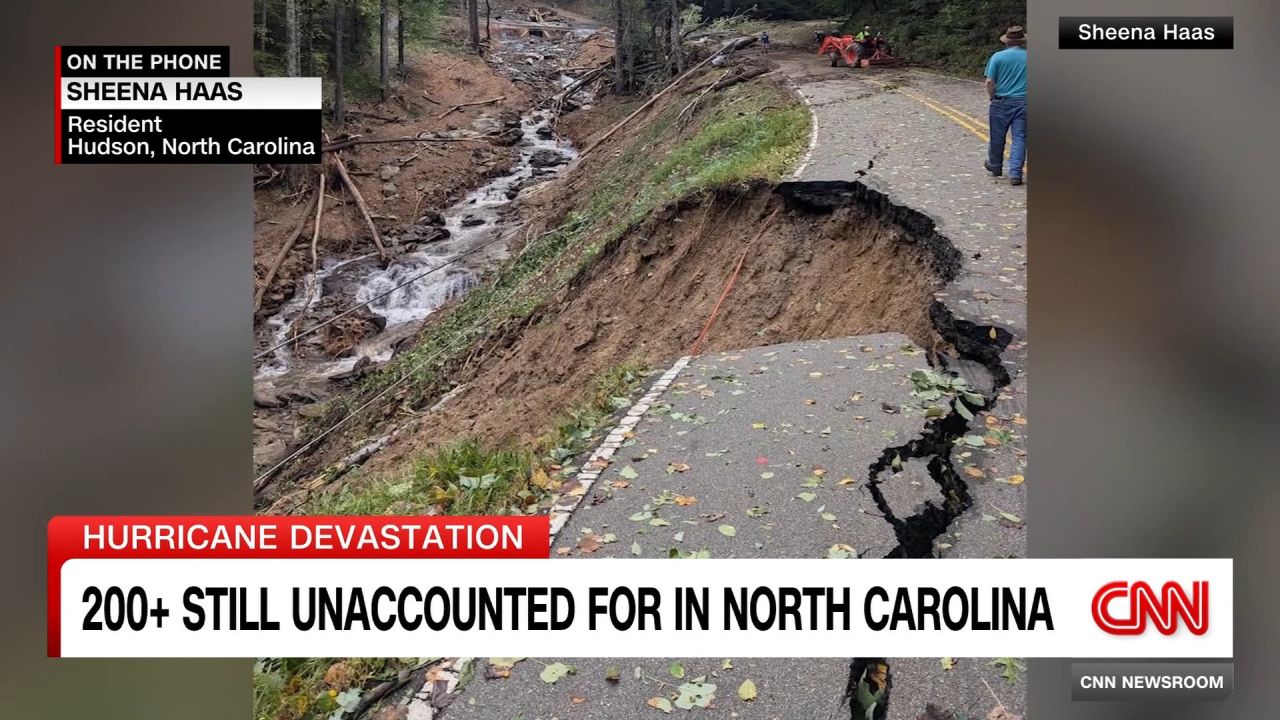
Kim Ashby, who taught in North Carolina schools for 20 years, is described by her daughter Jessica Meidinger as “the glue that holds everyone together.”
Kim and Rod Ashby have been building the house in Elk Park for about two years and stopped by regularly to add finishing touches. The couple live in Sanford, about 45 miles southwest of Raleigh, but went to their second house on Thursday to check on it before the storm.
Lauren Meidinger said her in-laws were having breakfast on the morning of September 27 when Rod realized something was wrong. “He heard a crack. He went outside again and saw that the footer of the home was gone,” Lauren said.
He rushed back in. “Hey, we need to get dressed. We need to evacuate,” he told his wife.
Within seconds, the house was swept away into the river. Rod Ashby grabbed Kim Ashby and the dogs, and they clung desperately to a section of wall until it broke apart.
He went up and down the bank yelling for his wife before finally crawling to a neighbor’s house for help. Jessica and Lauren Meidinger got him to their house on Tuesday night.
“He wants to get back up there and keep looking,” Lauren Meidinger said.
“She’s a fighter. You know, Kim fought breast cancer and beat it, and she’s fought her entire life,” Meidinger said of her mother-in-law. “We know that if she got out of that water, that she’s alive.”
Search teams using helicopters, drones and dogs have so far been unable to locate her.
CNN’s David Williams, Isabel Rosales, Artemis Moshtaghian, Dakin Andone, Mary Gilbert, Angela Fritz, Holly Yan, Andy Rose, Chelsea Bailey, Joe Sutton, Taylor Romine, Dianne Gallagher, Rachel Ramirez, Sam Fossum and Ashley R. Williams contributed to this report.

